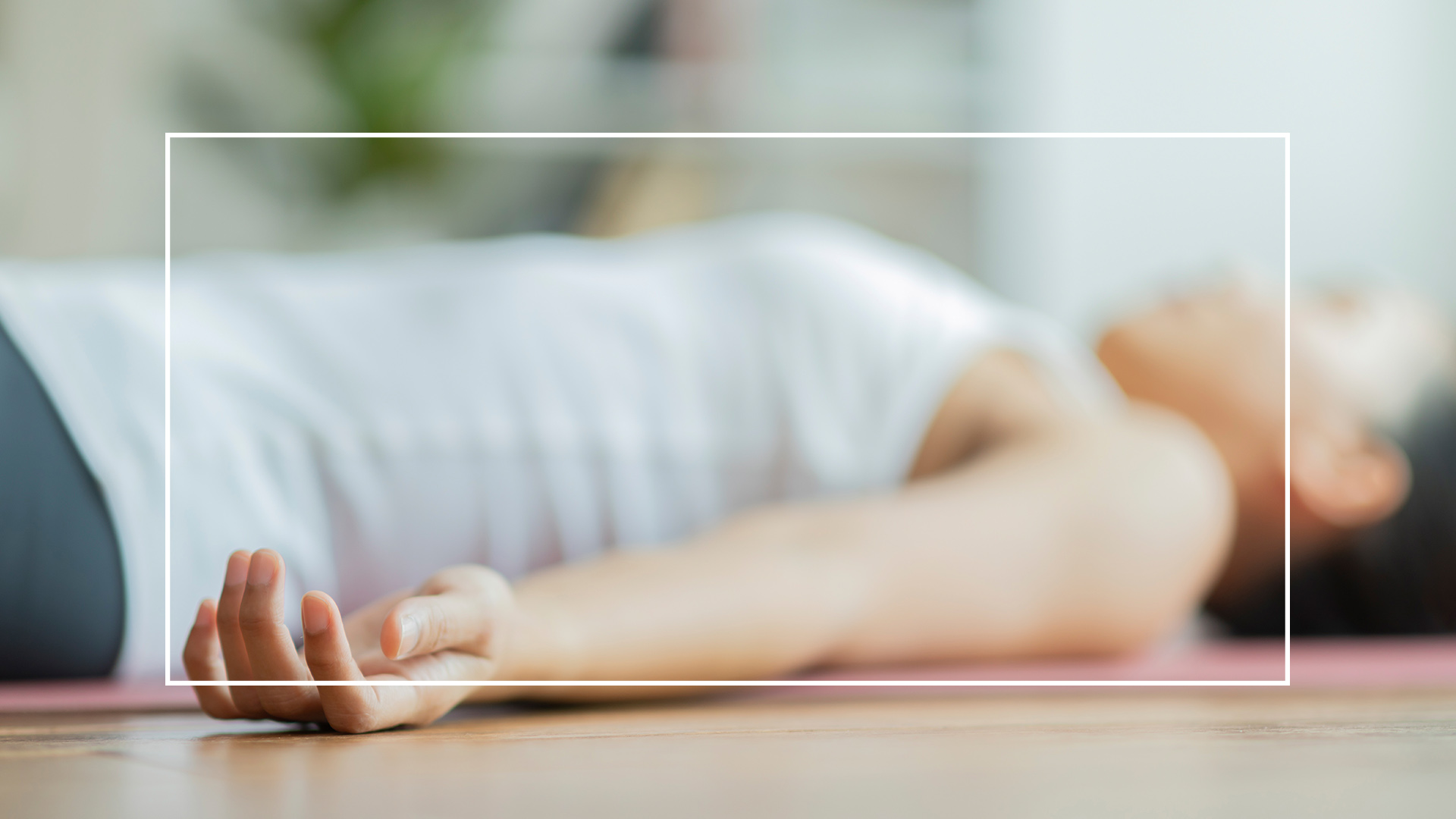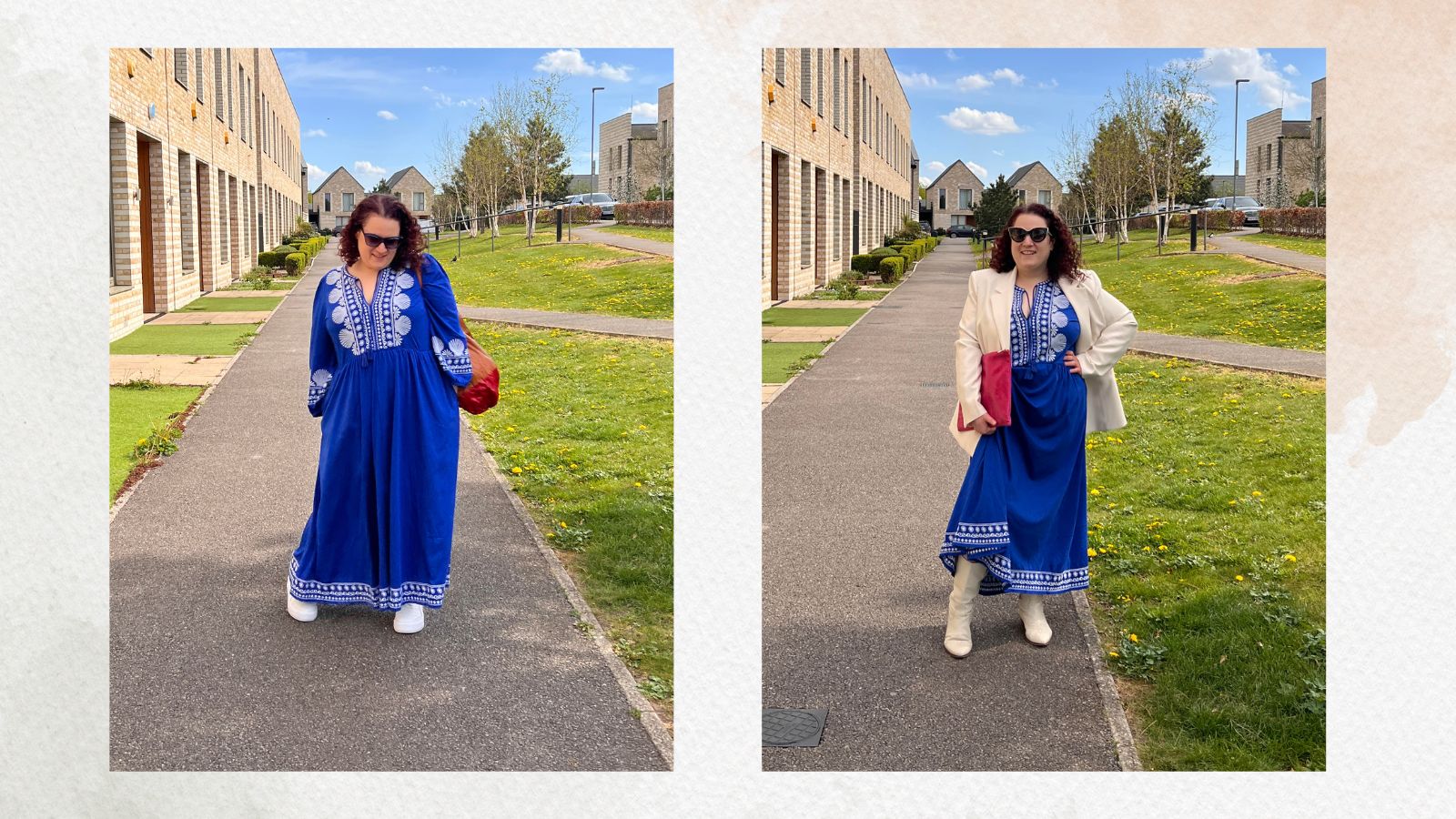Yoga nidra—the night-time practice that could transform your sleep
Yoga nidra is a deeply restorative practice that could help beat insomnia and other sleep issues


Yoga nidra could be the answer to your sleep problems. This typically evening practice is often referred to as restorative yoga as it’s great for relaxation—as opposed to hot yoga, or vinyasa styles, which really get the blood pumping.
One big benefit of yoga nidra is that you can choose where you do it. Some people prefer to lie down in bed and try some of the breathing exercises when they’re ready for shut-eye, while others roll out their mat (our guide to the best yoga mats might be helpful here) and make their practice a part of their bedtime routine.
Many people credit yoga nidra with improving their sleep. It's a natural solution that could either help you fall asleep fast or figure out how to get back to sleep when you wake up in the middle of the night. Prolonged sleep deprivation can have a big impact on your mental and physical health. Practicing yoga nidra for sleep might not be the first thing you think of, but it could be the solution you need to tackle common issues like sleep anxiety, insomnia, and disturbed sleep patterns.
We’ve asked our yoga experts for the scoop on this popular practice so you can lie back, relax and let yoga nidra meditation work its magic before you drift into a peaceful sleep.
What is yoga nidra and why is it so powerful?
Yoga nidra, when practiced correctly, has the power to affect your state of consciousness. "Yoga nidra is a deeply restorative style of yoga which leads you into a state of consciousness between being awake and being asleep,” says leading yoga teacher Sarah Highfield.
“It is also known as ‘yogic sleep’ and is often referred to as a powerful meditation technique to help you relax and rejuvenate."
Calming breath can be a game-changer when it comes to drifting off, sending a signal to the rest of our body that it's time to rest. Highfield continued, "Yoga nidra promotes deep rest and relaxation through a detailed progressive relaxation of your body and breath awareness, which effectively calms your nervous system.”
Sign up for the woman&home newsletter
Sign up to our free daily email for the latest royal and entertainment news, interesting opinion, expert advice on styling and beauty trends, and no-nonsense guides to the health and wellness questions you want answered.
How yoga nidra meditation works
“Yoga nidra meditation is a pathway to good sleep as it takes you into a conscious state which is akin to sleep and releases tension in your mind and body,” says Highfield.
“People who cannot sleep well, even if they feel physically, mentally, and emotionally tired, are often kept awake because their mind is overactive, and their body feels restless. Yoga nidra works to gradually release all of these small barriers and tensions," she adds.
Not convinced? “Whenever I have had insomnia in the past, yoga nidra has worked wonders in calming me down and preparing me for a deep restful night's sleep," adds yoga instructor Hannah Barrett. "Some people even say that 45 minutes of yogic sleep feels like three hours of regular sleep.”
Similar to sleep-guided meditations, this practice could be a natural cure for insomnia. But remember, allowing yourself to enter this conscious state takes patience. “It is one of deep surrender and the more you practice yoga nidra the more you will find this surrender," says Barrett.
The benefits of yoga nidra meditation for sleep
- It reduces anxiety. And if you're looking to improve your sleep yoga nidra is one of the best bedtime yoga practices. This is because it, “calms the nervous system, balancing our parasympathetic (rest and digest) and sympathetic (fight and flight) systems helping to calm the body and reduce stress and anxiety,” says Barrett.
- It releases stress in the body, which can also be beneficial if you suffer from physical aches and pains.
- Yoga nidra can also help with back pain. Yoga for back pain has long been recommended by experts as it can help relieve any tension which is especially important for aiding restful sleep.
- Yoga nidra is a natural sleep solution. If you want to avoid turning to sleeping pills to help you sleep better, it's a great natural alternative.
How to do yoga nidra
The best way to learn about yoga nidra meditation for sleep is to either attend a yoga nidra class at your local yoga studio, or you can do it at home using a recording. But whether you’re an experienced yogi or you’re looking for a yoga for beginners class, everyone can benefit from this practice.
“During the class, you will lie down on your back in a savasana pose, using any props to help you feel completely relaxed and comfortable,” says Highfield. “For extra comfort during the practice, lots of people will place a blanket on top of themselves, or place a cushion under the knees, or put an eye mask on.”
Once the meditation begins, all you need to do is simply keep your eyes closed, remain still and listen. “Try not to worry if your mind wanders off at any point, if you notice that happening, bring your attention back to the voice that is guiding you,” says Highfield. “Sometimes, people fall asleep during the meditation and if that happens, that’s OK too, as you will still receive the benefits because your unconscious mind will continue to absorb the meditation."
There’s no way to do a yoga nidra 'wrong' so long as you listen (without listening too hard) and relax, whatever your experience, the practice will still destress your body and mind.
Yoga nidra videos on Youtube
Want to give it a try? There’s plenty of guided yoga nidra on Youtube so you can find a video to suit you. Here are three picks that we love:
1. Yoga nidra deep relaxation
Time: 20 minutes
Great for beginners, this video will not only give you a guided mediation but you can see clearly how to get into the pose.
2. 20 minute-beginner deep relaxation
Time: Five minutes
Don't have time to commit to a longer video? There's no need to miss out completely, this five-minute practice will still allow you to relax your mind and body.
3. Full guided yoga nidra for inner peace and calm
Time: 20 minutes
If you're in need of a full wind-down experience, this video provides both a full body scan and guided yoga nidra meditation.

Rose Goodman is a health writer across print titles and websites including woman&home.
Prior to pursuing her career as a writer, Rose obtained a degree in psychology and went on to work in adult mental health for five years, specifically working with people diagnosed with eating disorders, anxiety, depression and OCD. Mental health and wellbeing is something Rose feels incredibly passionate about and believes normalising the conversation around mental illness is something we should all actively strive to do.
-
 I've got a wardrobe full of dresses but this is the Boden dress I'm wearing on repeat
I've got a wardrobe full of dresses but this is the Boden dress I'm wearing on repeatI've got a wardrobe full of dresses, but I'm wearing this Boden dress on repeat
By Rivkie Baum
-
 My hair gets greasy so quickly, but these three shampoos are the only ones that keep oily my strands at bay
My hair gets greasy so quickly, but these three shampoos are the only ones that keep oily my strands at bayThese three deeply cleansing formulas do a stellar job at prolonging the time between each hair wash
By Sennen Prickett